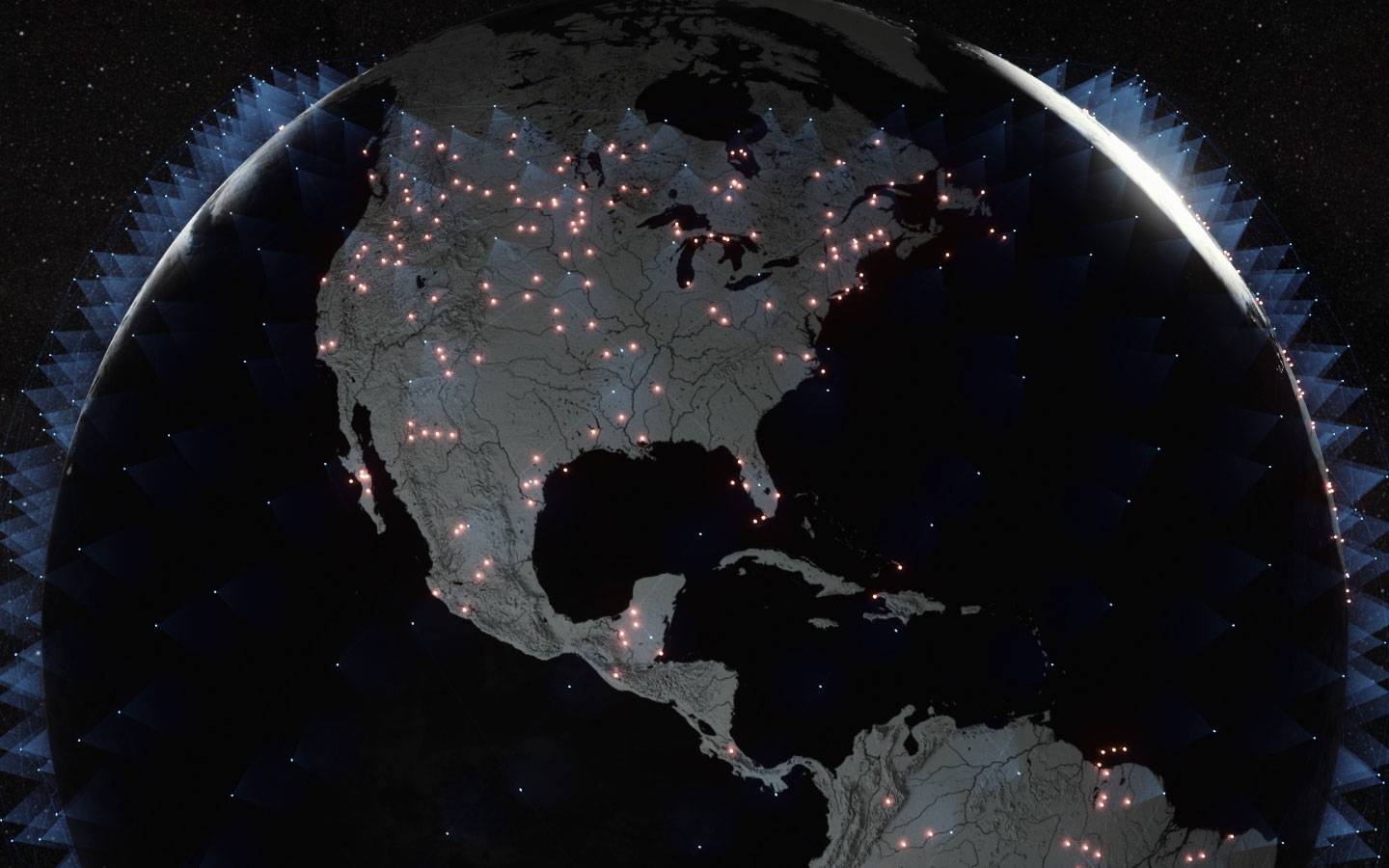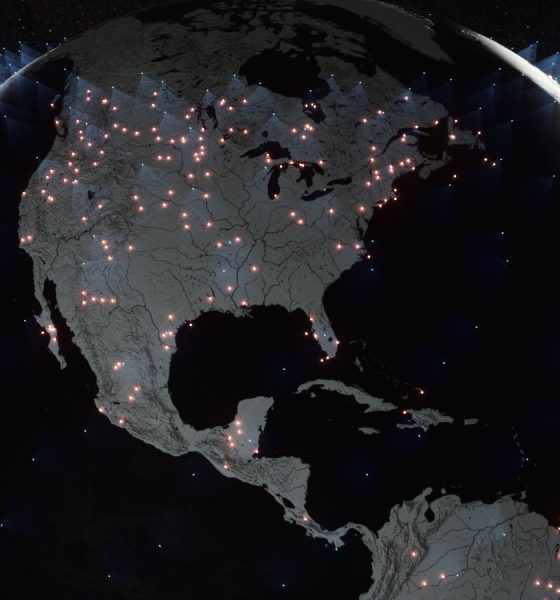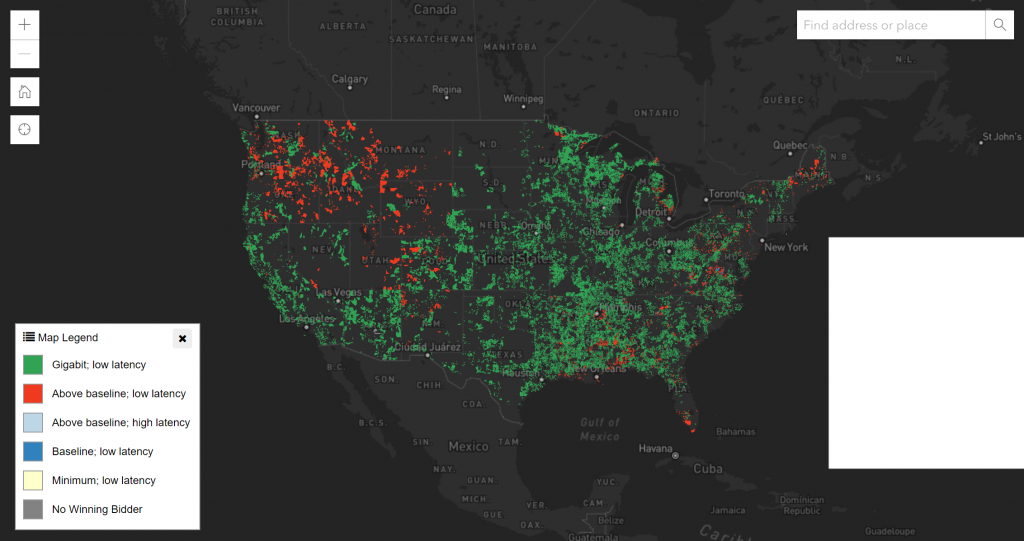

News
SpaceX wins almost $1B to bring Starlink internet to half a million US homes, businesses
In a competition against hundreds of providers, many established, SpaceX’s Starlink constellation has come out of left field to win almost $1B from the FCC – funds that will help bring high-quality internet to hundreds of thousands of rural Americans.
Just 13 months after Starlink v1.0 flights began, SpaceX has successfully delivered almost 900 operational Starlink satellites to low Earth orbit (LEO) over the course of 15 dedicated Falcon 9 launches. At least 700 of those ~265 kg (~580 lb) spacecraft have completed orbit raising maneuvers with krypton-fueled electric thrusters and are truly operational, serving an ever-growing number of Starlink internet beta customers across the northern US and southern Canda.
Out of 180 winning FCC auction bidders, SpaceX appears to be just one of two space-based internet providers despite the entrenched and monopolistic nature of existing rural satellite internet companies like Viasat and HughesNet – the latter of which did secure about $1.25 million to subsidize services at ~3700 locations. The main reason: designed to operate in LEO to ensure extremely low latencies, only SpaceX’s Starlink constellation was deemed eligible to compete for the majority of Auction 904, which prioritized high speeds and low latency (ping).

All told, SpaceX appears to be second only to one other competitor – a Charter Communications subsidiary – for the number of service locations it won during the FCC’s latest rural broadband auction. Based on a brief scan and analysis of official spreadsheets released by the regulatory agency, Charter won around $1.22 billion to subsidize service for 1.05 million rural American “locations” (i.e. homes, businesses, community centers, etc.), followed by SpaceX ($885 million for ~643,000 locations), and the Rural Electric Cooperative Consortium ($1.1 billion for ~618,500 locations).
LTD Broadband took home the biggest monetary prize, winning $1.32 billion to subsidize service at ~528,000 locations. While it’s difficult to compare on a level playing field due to the varying degrees of subsidy determined necessary by the FCC on a roughly case-by-case basis, SpaceX appears to be as cost-efficient or cheaper than the other two-dozen or so competitors that secured 100,000+ locations, averaging around $138 per site per year. For the entire auction, the average annual subsidy will be $176 per location.

According to the FCC, the funds will be evenly dispersed over the next 10 years, hopefully ensuring high-quality internet access for 5.2 million unserved rural homes and businesses and positively impacting the lives and communities of at least 10-20 million rural Americans.
Additionally, thanks to a very competitive auction, the FCC wound up committing only $9.2 billion of a total $16 billion available for this “Phase I” rural auction. Combined with funds reserved for future auctions, the FCC says it will be able to commit at least $11.2 billion to an upcoming Phase II auction, which will focus on underserved (“partially-served”) areas to complement Phase I’s focus on unserved locations.

To be clear, the ~$88 million SpaceX will receive annually for the next decade will go directly towards lowering the barrier to entry and cost of service for hundreds of thousands of Americans that currently have little to no reliable internet access. The company will be required to regularly hit buildout milestones, proving to the FCC that it’s on track to serve all ~543,000 awarded locations within six years of the first payment – but the faster, the better.

News
Tesla FSD fleet is nearing 7 billion total miles, including 2.5 billion city miles
As can be seen on Tesla’s official FSD webpage, vehicles equipped with the system have now navigated over 6.99 billion miles.

Tesla’s Full Self-Driving (Supervised) fleet is closing in on almost 7 billion total miles driven, as per data posted by the company on its official FSD webpage.
These figures hint at the massive scale of data fueling Tesla’s rapid FSD improvements, which have been quite notable as of late.
FSD mileage milestones
As can be seen on Tesla’s official FSD webpage, vehicles equipped with the system have now navigated over 6.99 billion miles. Tesla owner and avid FSD tester Whole Mars Catalog also shared a screenshot indicating that from the nearly 7 billion miles traveled by the FSD fleet, more than 2.5 billion miles were driven inside cities.
City miles are particularly valuable for complex urban scenarios like unprotected turns, pedestrian interactions, and traffic lights. This is also the difference-maker for FSD, as only complex solutions, such as Waymo’s self-driving taxis, operate similarly on inner-city streets. And even then, incidents such as the San Francisco blackouts have proven challenging for sensor-rich vehicles like Waymos.
Tesla’s data edge
Tesla has a number of advantages in the autonomous vehicle sector, one of which is the size of its fleet and the number of vehicles training FSD on real-world roads. Tesla’s nearly 7 billion FSD miles then allow the company to roll out updates that make its vehicles behave like they are being driven by experienced drivers, even if they are operating on their own.
So notable are Tesla’s improvements to FSD that NVIDIA Director of Robotics Jim Fan, after experiencing FSD v14, noted that the system is the first AI that passes what he described as a “Physical Turing Test.”
“Despite knowing exactly how robot learning works, I still find it magical watching the steering wheel turn by itself. First it feels surreal, next it becomes routine. Then, like the smartphone, taking it away actively hurts. This is how humanity gets rewired and glued to god-like technologies,” Fan wrote in a post on X.
News
Tesla starts showing how FSD will change lives in Europe
Local officials tested the system on narrow country roads and were impressed by FSD’s smooth, human-like driving, with some calling the service a game-changer for everyday life in areas that are far from urban centers.

Tesla has launched Europe’s first public shuttle service using Full Self-Driving (Supervised) in the rural Eifelkreis Bitburg-Prüm region of Germany, demonstrating how the technology can restore independence and mobility for people who struggle with limited transport options.
Local officials tested the system on narrow country roads and were impressed by FSD’s smooth, human-like driving, with some calling the service a game-changer for everyday life in areas that are far from urban centers.
Officials see real impact on rural residents
Arzfeld Mayor Johannes Kuhl and District Administrator Andreas Kruppert personally tested the Tesla shuttle service. This allowed them to see just how well FSD navigated winding lanes and rural roads confidently. Kruppert said, “Autonomous driving sounds like science fiction to many, but we simply see here that it works totally well in rural regions too.” Kuhl, for his part, also noted that FSD “feels like a very experienced driver.”
The pilot complements the area’s “Citizen Bus” program, which provides on-demand rides for elderly residents who can no longer drive themselves. Tesla Europe shared a video of a demonstration of the service, highlighting how FSD gives people their freedom back, even in places where public transport is not as prevalent.
What the Ministry for Economic Affairs and Transport says
Rhineland-Palatinate’s Minister Daniela Schmitt supported the project, praising the collaboration that made this “first of its kind in Europe” possible. As per the ministry, the rural rollout for the service shows FSD’s potential beyond major cities, and it delivers tangible benefits like grocery runs, doctor visits, and social connections for isolated residents.
“Reliable and flexible mobility is especially vital in rural areas. With the launch of a shuttle service using self-driving vehicles (FSD supervised) by Tesla in the Eifelkreis Bitburg-Prüm, an innovative pilot project is now getting underway that complements local community bus services. It is the first project of its kind in Europe.
“The result is a real gain for rural mobility: greater accessibility, more flexibility and tangible benefits for everyday life. A strong signal for innovation, cooperation and future-oriented mobility beyond urban centers,” the ministry wrote in a LinkedIn post.
News
Tesla China quietly posts Robotaxi-related job listing
Tesla China is currently seeking a Low Voltage Electrical Engineer to work on circuit board design for the company’s autonomous vehicles.

Tesla has posted a new job listing in Shanghai explicitly tied to its Robotaxi program, fueling speculation that the company is preparing to launch its dedicated autonomous ride-hailing service in China.
As noted in the listing, Tesla China is currently seeking a Low Voltage Electrical Engineer to work on circuit board design for the company’s autonomous vehicles.
Robotaxi-specific role
The listing, which was shared on social media platform X by industry watcher @tslaming, suggested that Tesla China is looking to fill the role urgently. The job listing itself specifically mentions that the person hired for the role will be working on the Low Voltage Hardware team, which would design the circuit boards that would serve as the nervous system of the Robotaxi.
Key tasks for the role, as indicated in the job listing, include collaboration with PCB layout, firmware, mechanical, program management, and validation teams, among other responsibilities. The role is based in Shanghai.
China Robotaxi launch
China represents a massive potential market for robotaxis, with its dense urban centers and supportive policies in select cities. Tesla has limited permission to roll out FSD in the country, though despite this, its vehicles have been hailed as among the best in the market when it comes to autonomous features. So far, at least, it appears that China supports Tesla’s FSD and Robotaxi rollout.
This was hinted at in November, when Tesla brought the Cybercab to the 8th China International Import Expo (CIIE) in Shanghai, marking the first time that the autonomous two-seater was brought to the Asia-Pacific region. The vehicle, despite not having a release date in China, received a significant amount of interest among the event’s attendees.








